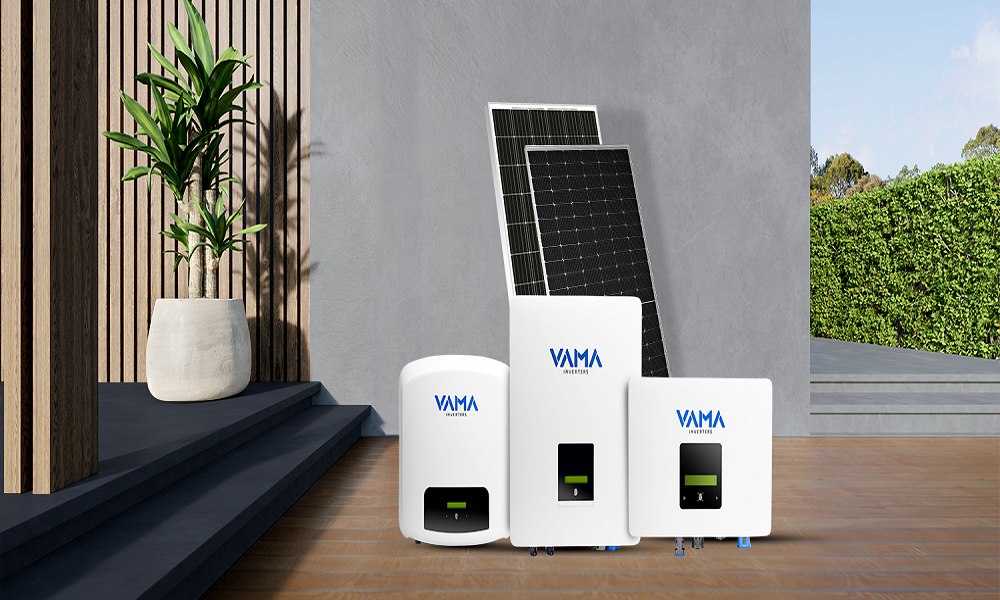
On-grid solar is connected to your local utility’s grid. For most residential properties, this option ensures coverage for under- or over-production of solar energy to meet their energy needs. Essentially, your utility system serves as your battery space. Due to its flexibility and affordability, on-grid solar systems are generally the primary choice for home solar systems. Consider solar electricity as an efficient and green energy source. On-grid systems allow you to start with a direct energy plant. Upgrade it when you’re satisfied with its performance. Add a battery bank to your solar system to maximize its potential. If you also are looking for a solar panel manufacture, you must contact Goldi Solar.
What is an On-Grid Solar Inverter: What’s its role?
An on-grid solar inverter is sometimes called a converter because it transforms unusable DC electricity into usable AC electricity. It serves several more purposes in a grid-connected solar system. Let’s have a look at them one by one.
- Energy Conversion: The majority of households rely on alternating current power. As a result, the solar system’s DC electricity cannot be used in its original form. Instead, the grid inverter turns it into 220 or 440-volt AC electricity, depending on the household’s needs.
- Device Safety: An on-grid inverter includes a safety device that protects the on-grid solar system from electrical damage. For example, if an electrical arc occurs, the grid-tied inverter promptly shuts off the system.
- Power Output Regulation and Maximization: The on-grid inverter optimizes and regulates power output to deal with fluctuations.
- Grid Assistance: In both directions, the on-grid solar inverter communicates with the electricity grid. This means the inverter will feed excess energy to the grid and pull electricity when needed. Furthermore, it detects any disruptions in the electrical grid, allowing the solar system to enter a safe mode. If the grid fails, the inverter can cut down the power source.
- Power Production Tracking: The grid-connected solar inverter facilitates power production tracking. As a result, you can monitor how much excess power is generated during each cycle.
Types of On-Grid Solar Inverter
Inverters for Strings:
The grid is immediately connected to these solar inverters. They are the most often utilized type of solar inverter for both residential and commercial applications. String inverters do not typically include a battery backup. However, an on-grid solar system does not require a battery because the grid handles the work.
Micro-Inverters:
Micro inverters are smaller in size but more expensive than string inverters. This type of inverter typically has a capacity range of 200-350 W. Micro-inverters, which are installed separately on the back of each solar panel, are excellent for locations where the quantity of sunlight received by each solar panel varies.
Applications of On-Grid Solar Inverter
The on-grid inverter is a low-cost, long-term energy conversion solution. As a result, it is appropriate for both household and commercial use. However, different types of on-grid inverters are suitable for specific purposes. String and micro inverters are the most often utilized solar inverters in residential applications. On the other hand, high-capacity central inverters are best suited for industrial applications. Also, when someone mentions hybrid solar inverters, they refer to an on-grid inverter linked to a battery bank. The hybrid solar system is grid-connected; the only difference is that, as previously stated, it includes a small battery bank for emergency use.
Benefits of On-Grid Solar
- Significant savings on power bills: With a net meter, the consumer only pays for the excess electricity he consumes, resulting in a significantly lower monthly cost. Our customers have saved up to 90% on their monthly expenditures.
- Simple upkeep: The absence of batteries in the on-grid system simplifies maintenance. It also eliminates the cost of battery maintenance.
- Coordinate with other power sources: These devices can communicate with an on-site diesel generator. This is critical if grid electricity is unavailable.
- Increased ROI: Because there are no batteries, the cost of an on-grid solar system is cheaper than that of other types of solar systems. It also produces the most power compared to different solar system types. The low maintenance and lower monthly power expenditures ensure the user receives a 25- 30% ROI. This means that for every Rs. 100,000 invested in solar, the client earns Rs.25,000.
You understand the different varieties, the benefits, and the drawbacks. As a result, the grid inverter you purchase now will be a well-informed decision. It is up to you to buy a battery bank separately. However, an on-grid inverter should suffice if your neighborhood doesn’t experience frequent power outages. Goldi Solar Will Power Your Future! Our cutting-edge solar panels allow you to embrace renewable energy and alter your life. Make a sustainable choice and join the green movement today. Say goodbye to excessive energy bills and hello to a brighter, more environmentally friendly future. Choose Goldi Solar to take the first step toward energy independence. Act now to help the sun power your path to a greener, cleaner, and more cost-effective tomorrow.



